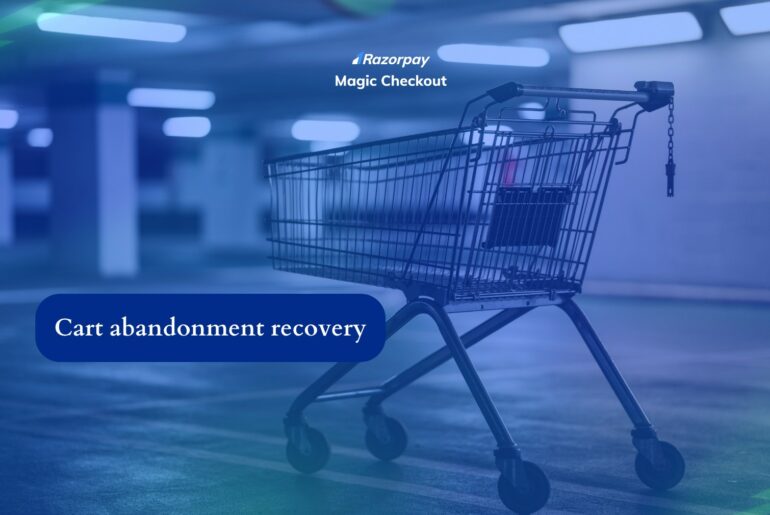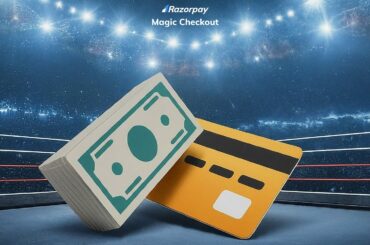Updated on 11th March, 2024
Working on abandoned cart recovery is essential for every online store facing the challenge of customers abandoning their carts during checkout. Picture this scenario: customers excitedly browsing your captivating online store, eagerly adding items to their carts, only to abandon them at the final checkout stage. Shockingly, research indicates that cart abandonment rates can reach a daunting 70%.
Now, let’s delve into the reasons behind cart abandonment and explore actionable strategies for abandoned cart recovery. Join us as we uncover the top 10 factors contributing to high cart abandonment rates and reveal foolproof plans for cart abandonment recovery.
What is Abandoned Cart Recovery in E-commerce?
Abandoned Cart Recovery in e-commerce refers to the process of re-engaging with customers who have added items to their online shopping carts but failed to complete the purchase. It involves employing strategies such as email reminders, retargeting ads, and streamlined checkout processes to encourage these customers to return and finalize their transactions. This approach aims to recover potentially lost sales and improve conversion rates by addressing common reasons for cart abandonment and incentivizing customers to complete their purchases.
Abandoned Cart Recovery: 10 Foolproof Methods to Win Back Customers
Lack of Mobile-Friendly Design
Customers crave the freedom to shop from any device at any time. If your online store isn’t mobile-friendly, you risk losing customers. Pages optimized solely for desktops may look distorted on mobile screens, making product discovery and information retrieval difficult. Considering that mobile shoppers make up 60% of online customers, having a mobile-friendly interface is crucial.
Solution– Make the website design responsive so that it adapts to different screen sizes seamlessly. Ensure the navigation is optimized for mobile users. Prioritize key elements, such as search bars, shopping carts, and menus. Images and videos need to be optimized so that it fits the screen perfectly and doesn’t hamper the loading speed.
Hidden Charges Increasing Total Cost
Transparency matters, especially in matters of money. If customers aren’t clear about product costs, they’re likely to leave their carts behind. Being upfront builds trust. ‘Sticker shock,’ the sudden jolt from unexpected price increases, can seriously affect how customers view a product’s value.
Solution: Never hide costs. Even if it’s extra shipping costs or taxes, highlight every potential additional cost before a customer adds the items to their shopping cart. By doing this, you will set accurate expectations and minimize the chances of a high cart abandonment rate.
Unnecessary Account Creation
Customers want a fast checkout process. Unnecessary account creation contributes to a 25% cart abandonment rate. Simplify the process, as customers don’t want to spend extra time creating accounts for each online store.
Solution: Analyze the online shopping behavior of your customers, and if you see more drop-offs on the account creation page, address it by offering a guest checkout option. Razorpay’s Magic Checkout streamlines the process with one-time OTP authentication, eliminating mandatory account creation. Brands like Anveya, Alphonso Mango, and Barosi have already reduced their high cart abandonment rates with Razorpay Magic Checkout, and you can too!
Slow Product Delivery
Perfect website, great products, but slow delivery? That could lead to cart abandonment. Ensure you offer reasonable delivery options, as 24% of online shoppers abandon carts due to slow delivery.
Solution: Enhance customer retention by clarifying delivery expectations. Present delivery windows upfront, including options like standard (3-5 business days), expedited (1-2 business days), or same-day (within 5-6 hours). Consider discounts for standard delivery to incentivize customer satisfaction.
Concerns About Sharing Credit Card Information
Just like everyone else, customers are cautious about sharing their credit card details online. Around 19% of online shoppers abandon their carts because they’re wary of divulging such sensitive information.
Solution: In order to reduce cart abandonment for situations like trust issues, think of displaying a recognized trust badge and security seals. Razorpay’s Trusted Business Badge (RTB) is proven to instill confidence, with the RTB widget potentially increasing conversion rates by 20%. In a world filled with scammers, displaying trust badges, emphasizing SSL encryption, and showcasing compliance with data protection regulations make your online store trustworthy.
Complicated Checkout Experience
Complicated checkout processes result in 18% of customers abandoning their carts. Regardless of how aesthetically pleasing your online store is, customers always prefer a seamless shopping experience.
Solution: Simplify the checkout process to recover abandoned carts. Opt for a one-click checkout solution, like Razorpay Magic Checkout, to streamline payment and save customers time. Magic Checkout leverages Razorpay’s extensive network, serving 200 million+ customers yearly, to pre-fill essential details automatically. Razorpay strictly follows RBI guidelines.
Also Read: How Can Checkout Make or Break Your Online Business?
Return Policy Fails to Meet Expectations
Not every product will be a perfect fit. Customers understand this, and that’s why they look for a reliable return policy. If the policy falls short, 16% of customers may abandon their carts.
Solution: Articulate return policies on product pages and during checkout for trust. Extend return timeframes for customer flexibility. Streamline the process with clear instructions and user-friendly return/refund forms. Address concerns promptly, assuring efficient handling of inquiries and issues.
Frequent Crashes and Loading Problems
A crashing or poorly loading online store is a significant turn-off. Regardless of attractive products, customers won’t spend time on a malfunctioning website. Promptly address these issues, as 14% of online shoppers abandon stores experiencing such problems.
Solution: Regular website maintenance prevents issues from escalating to crashes. Invest in robust hosting for traffic spikes. Optimize for mobile to prevent loading problems. Rigorous user testing addresses usability issues.
Unavailability of Preferred Payment Option
Customers want the flexibility to choose their preferred payment method, just like they want to shop online from any device they want. Failing to provide these choices could lead to an 11% increase in abandoned checkouts as customers seek alternatives with preferred payment options.
Solution: Encourage swift payments by offering diverse options, considering preferences like the widely preferred cash on delivery in India. Provide choices like credit cards, digital wallets, and UPI. Leverage Razorpay Magic Checkout for a 5x faster process, displaying all options on one screen, including COD. Communicate accepted methods clearly on the website, ensuring customers are informed before reaching checkout.
Related Read: What are the Different Types of Digital Wallets?
Promo or Coupon Codes Unavailable
Everyone loves saving money. Without promo or coupon codes, 8% of online shoppers are likely to abandon their carts in favor of stores offering these discounts. By addressing these common issues, you can significantly reduce cart abandonment rates and create a smoother shopping experience for your customers.
Solution: Drive purchases with strategic promotions like seasonal sales. Tailor promotions to individual preferences based on browsing behavior. Create loyalty programs rewarding repeat customers. Implement cart abandonment recovery with automatic reminders and special promo codes.
Bonus Tip: Leverage Cart Abandonment Emails for Recovery
Harness the power of abandoned cart recovery emails to re-engage potential customers. Craft compelling emails that remind them of their abandoned items, accompanied by exclusive discounts or incentives. Utilize personalized messaging based on their browsing history, creating a sense of urgency to prompt a swift return to complete the purchase. Implementing a well-timed and thoughtful email strategy can significantly recover abandoned carts, nudging hesitant customers back into the sales funnel and boosting overall conversion rates
Note: If you want to retarget cart abandoners, try signing up for Magic Konnect. Razorpay’s WhatsApp game-changer! Anticipate 40% lower costs, 60% more cart recoveries, and 50% faster support on WhatsApp! Elevate your business like never before! Sign Up for early access here.
Learn More About Magic Konnect: Link
Wrapping Up
In conclusion, tackling issues such as mobile optimization, hidden costs, and checkout simplicity is crucial for effective abandoned cart recovery. By employing strategic solutions and utilizing tools like Razorpay Magic Checkout, online retailers can recover lost carts and improve the overall shopping experience. Consider integrating personalized promotions, offering diverse payment options, and utilizing cart abandonment emails to further optimize your e-commerce success. Remember, addressing each concern contributes to a smoother, more trustworthy online shopping journey for your customers.




